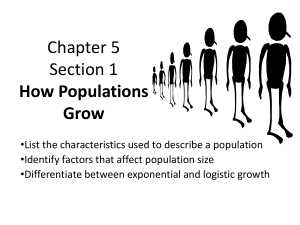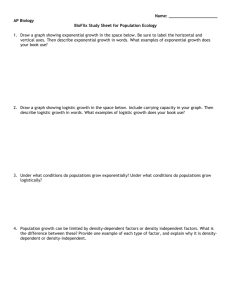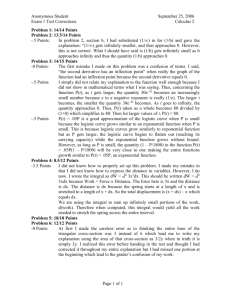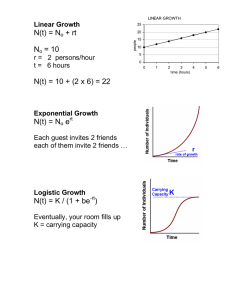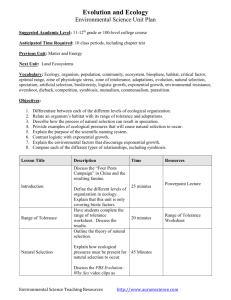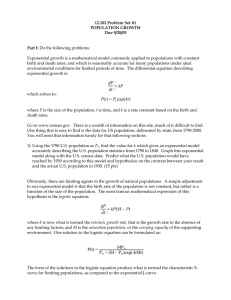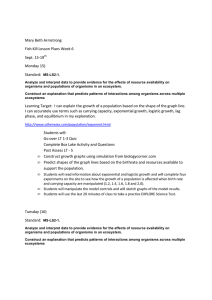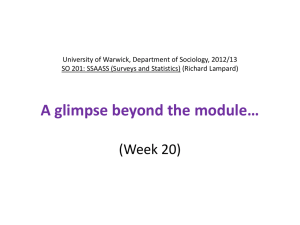The Logistic Population Model Math 121 Calculus II
advertisement
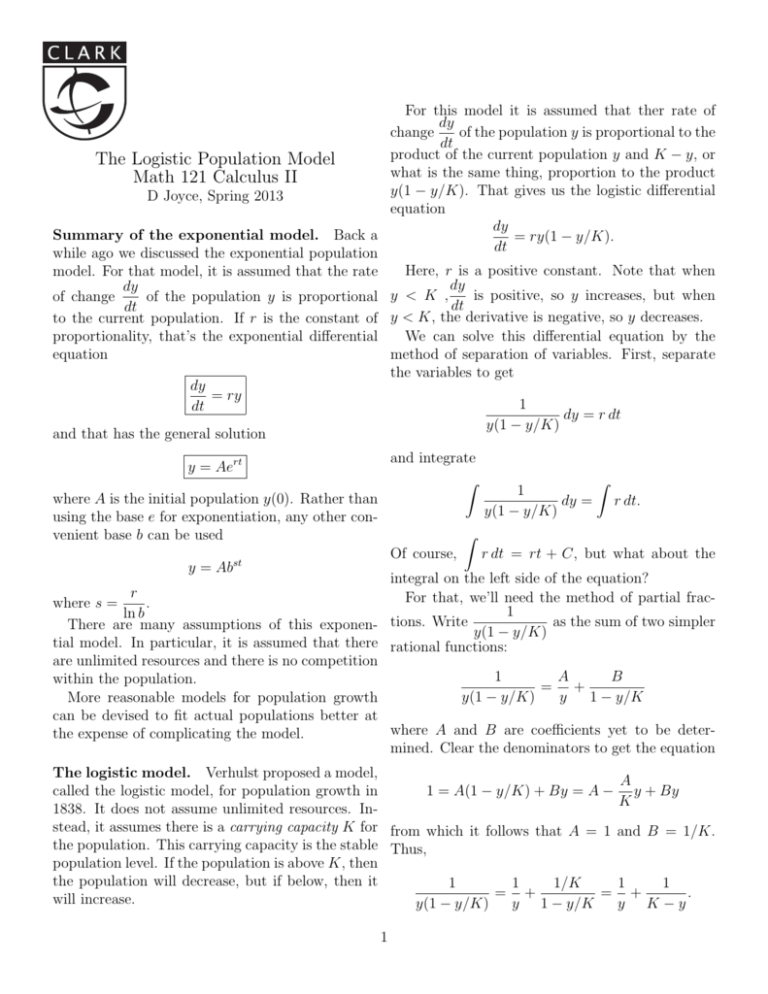
For this model it is assumed that ther rate of dy change of the population y is proportional to the dt product of the current population y and K − y, or The Logistic Population Model what is the same thing, proportion to the product Math 121 Calculus II y(1 − y/K). That gives us the logistic differential D Joyce, Spring 2013 equation dy Summary of the exponential model. Back a = ry(1 − y/K). dt while ago we discussed the exponential population Here, r is a positive constant. Note that when model. For that model, it is assumed that the rate dy dy is positive, so y increases, but when of the population y is proportional y < K , of change dt dt to the current population. If r is the constant of y < K, the derivative is negative, so y decreases. proportionality, that’s the exponential differential We can solve this differential equation by the equation method of separation of variables. First, separate the variables to get dy = ry 1 dt dy = r dt y(1 − y/K) and that has the general solution and integrate Z y = Aert where A is the initial population y(0). Rather than using the base e for exponentiation, any other convenient base b can be used 1 dy = y(1 − y/K) Z r dt. Z Of course, y = Abst r dt = rt + C, but what about the integral on the left side of the equation? r For that, we’ll need the method of partial fracwhere s = . 1 ln b There are many assumptions of this exponen- tions. Write y(1 − y/K) as the sum of two simpler tial model. In particular, it is assumed that there rational functions: are unlimited resources and there is no competition 1 A B within the population. = + y(1 − y/K) y 1 − y/K More reasonable models for population growth can be devised to fit actual populations better at where A and B are coefficients yet to be deterthe expense of complicating the model. mined. Clear the denominators to get the equation The logistic model. Verhulst proposed a model, A called the logistic model, for population growth in 1 = A(1 − y/K) + By = A − y + By K 1838. It does not assume unlimited resources. Instead, it assumes there is a carrying capacity K for from which it follows that A = 1 and B = 1/K. the population. This carrying capacity is the stable Thus, population level. If the population is above K, then the population will decrease, but if below, then it 1 1 1/K 1 1 = + = + . will increase. y(1 − y/K) y 1 − y/K y K −y 1 Therefore, Z Z Z dy dy dy = + y(1 − y/K) y K −y = ln y − ln |K − y| y . = ln y −K Now that we’ve integrated the left side of the equation, we can continue y = rt + C ln y −K Next, the application of a little algebra gives us y= K 1 + Ae−rt where A is a constant. The graph of this function is asymptotic to the y-axis on the left, asymptotic to the line y = K on the right, and symmetric with respect to the point where y = K/2, which is an inflection point. To its left, the graph is concave upward, but to its right, concave downward. Here’s the graph of for K = 1, A = 1, and r = 1, so that 1 . y= 1 + e−t Math 121 Home Page http://math.clarku.edu/~djoyce/ma121/ at 2

